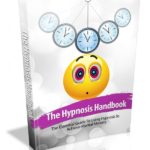“Do You Realize How Much Better You’ll Feel Once You Learn How Exhilarating A Healthy Diet Is?”
Do you feel run down, sluggish or just not as energetic as you once did?
Do you try to alleviate your listlessness with coffee, sugar and other unhealthy products that probably do nothing other than give you a quick fix of energy and then make you feel worse than before?
Everyone knows that a proper diet is essential to maintaining a healthy energy level. Unfortunately though, not everyone fully understands what is involved in creating a proper diet and how it easy it is to keep.
A healthy diet doesn’t mean eating only bland salads and removing breads, pastas, sweets, soda, cake and other goodies, it means building a balanced diet that allows you to treat yourself without sacrificing your long term health.
When most people hear the words diet, they normally think of green leaves and little else. Images of healthy eaters are never smiling and who can get excited about the prospect of sitting down to a meal that’s devoid of flavor, calories and red meat?
At least that’s what I thought a diet was before I was cornered into building one for myself. Now, I know better. I know how great it is to finally make it through a meeting without falling asleep. I know how fantastic it feels to be alive and awake first thing in the morning. I know how marvelous it feels to have the energy to do anything I want.
I used to be lazy. I used to be one of the laziest people currently alive. I’m not exaggerating. If you looked up lazy in the dictionary, you’d see a huge picture of me.
I never left my house unless I absolutely had to and I only picked up my cell phone if I knew who was calling and what they wanted. I didn’t return messages and couldn’t find the energy to respond to an email.
My laziness didn’t come from my lack of desire, but from not having enough energy to get my lazy butt in motion. I wanted to live an exciting, eventful life, I just couldn’t figure out how to wake myself up long enough to do any of the things I wanted to do.
And on top of it all, I had the worst eating habits of anyone you probably have ever met.
My normal day went something like this: I’d wake up at 7am and require at least one cup of coffee to get me moving. I rarely ate breakfast at home, instead, I’d have a snack of some sort along with another cup of coffee at work. For lunch I always ate a ham and cheese sandwich and like clockwork I had my third cup of coffee halfway though my afternoon. For dinner, I would normally pick up takeout.
Looking back upon my eating habits, I couldn’t believed that I thought I was eating healthy. There was no part of my diet that was balanced or wholesome, just empty calories and processed foods. It’s no wonder I was so lethargic.
The funny thing is, at the time I didn’t realize that my eating habits were so poor. It wasn’t until I started dating my current girlfriend that I saw how bad my habits had become.
Like any normal couples, Linda and I based our relationship around food. We went out for dinner, had picnics in the park and enjoyed sharing a Sunday brunch.
It seemed like the more time we spent together, the more time we spent eating together. Given my intense laziness, a perfect date was staying in, ordering a pizza and watching a movie. So we did that a lot.
Looking back upon the events of the time, I’m sure Linda started picking up on my poor nutritional habits right from the beginning. There were subtle suggestions like asking, “isn’t this the second time today you’ve had french fries?” or “is that your third helping of bacon?”
As time went on, Linda stopped being so subtle with her hints. She started forbidding me from eating certain foods and wanted me to start being more active. She stopped suggesting that we walk to the drug store instead of driving and started requiring we walk.
Despite the naggings and new laws, I still wasn’t understanding how vital it was to start eating better. It was only one day, during one of our weekly Saturday afternoon walk that I realized how tired I was.
You see, when Linda first started making me live a more active lifestyle, it was difficult to motivate myself. I didn’t enjoy walking and I was usually too tired to move. But once I started, I assumed that things would get easier. I imagined that the more I did it, the more my body would get used to doing it and it wouldn’t be such a challenge.
After nearly a two months of activity, I couldn’t figure out why my body wasn’t adjusting properly. It’s not like I was training to run a marathon, I was just trying to find the energy to walk around the block a couple of times.
I started thinking about seeing a doctor, to see if there was a medical reason why I never had any energy. I mentioned this to Linda and she looked at me like I was totally nuts. She told me that I didn’t need a doctor, I just needed to eat better.
She handed me a banana and told me to eat it.
For the remainder of our walk, Linda explained to me what was wrong with my eating habits and what I should be doing instead.
When we got back to my house, Linda started writing out schedules and menus and I couldn’t understand what she was talking about. I initially thought she was crazy. I didn’t believe that the solution to all my problems could come from eating more vegetables.
But I had no reason not to listen to her. If I was right, I’d stay the same. If she was right, I’d be a healthier person who felt great. I felt that it couldn’t really hurt to try her suggestions.
Linda started helping me watch what I ate and together we started learning about the proper way to build a daily diet. We started buying books and talking to other people interested in feeling better through healthy eating habits.
The more I learnt, the more of the information I was able to fit into my life. I was feeling like I was alive for the first time in my life.
The healthier diet was really providing me with more energy. I cut down on my need for coffee and completely removed unnecessary sugar from my diet. I no longer needed such motivation to get out and do things and I was able to simply spring out of bed every morning without feeling groggy for an hour.
I never realized how big an improvement a proper diet could be. If you constantly feel tired and need something more than a big shot of caffeine to motivate yourself, Eat Right To Feel Great could be just what you are looking for.
I wrote Eat Right To Feel Great as a collection of what I learnt with my experience. It can help you too, find out how by purchasing today.
Don’t Waste Another Day Sitting On Your Couch! Eat Your Way To Feeling Better!!
Food is the sustenance that powers our body. We depend on it for more than just enjoyment.
As our lifestyles become more complex and stressful, the need for a healthy lifestyle is so much more important. The energy needed to stabilize an active person today is greater than was needed twenty years ago. To maintain the lifestyle that most people lead, it is advisable not skipping meals and to start eating right.
Eating right is more than just having a salad once a week. To significantly feel better, you need to understand the way your body processes food. The only way you can help your body create more energy is controlling what you put in your mouth.
Learn today what you can eat so you can feel better. Buy Eat Right To Feel Great
Eat Right To Feel Great Will Help You Understand…
What Your Ideal Diet Is!
How To Feel Great Just By Eating The Foods That’ re Right For You!
How To Lose Weight Just By Eating Right!
Which Foods Can Increase Your Energy Level!









